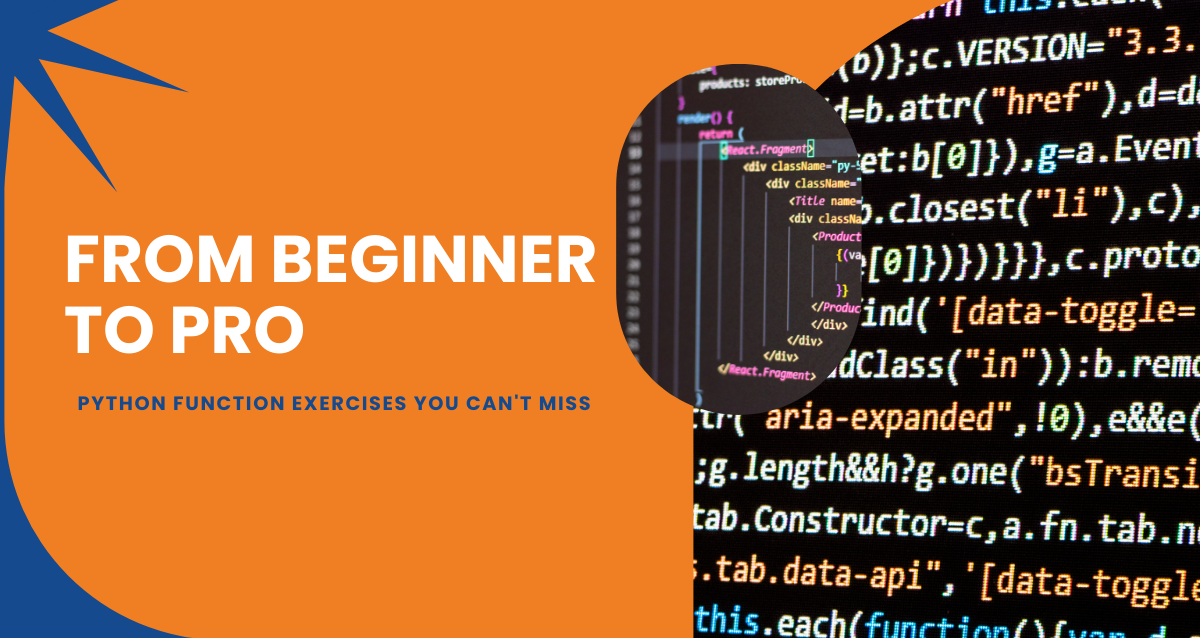
 9-Sep-2025
9-Sep-2025
The Python functions are the key to simple and effective, as well as reusable code. You may be either a beginner or you may want to practice what you have learned; hands-on exercises are one of the best methods of learning. This blog will discuss why Python functions are critical, what resources are trending to practice, and a list of exercises that we have selected to support your level of proficiency.
In Python, functions enable you to organize the code into reusable pieces, so there is less repetition. They promote better arrangement of code, thus simplifying maintenance, resolving issues, and debugging. Functions are essential for solving any complex problems and for developing applications that require scaling.
In order to remain up to date and be able to practice Python functions, it is possible to consider the following resources:
This site provides more than 100 exercises that are either at a basic or advanced level. There are solutions and explanations attached to every exercise, which makes them perfect in self-paced learning. Recursion, lambda functions and concepts of functional programming are topics of discussion.
Catered to beginners, this source offers 10 actual exercises devoted to basic functioning concepts. Exercises consist of such exercises as counting upper and lowercase characters in a string or elimination of duplicates in a list.
The above collection focuses on practical work, with life on the ground. The tasks performed during exercises include the calculation of the factorial of a number and the determination of whether or not a number is within a given range.
GeeksforGeeks provides a full list of exercises by difficulty. The platform gives immediate feedback, which assists learners to know and rectify the errors in time.
Now let’s get started with some curated exercises:
Create a Python function that will add all the numbers in a list.
Example:
def sum_list(numbers): return sum(numbers) print(sum_list([1, 2, 3, 4])) # Output: 10
Write a Python function to take in a string and count the number of upper case and lower case letters as well.
Example:
def count_case(s): upper = sum(1 for c in s if c.isupper()) lower = sum(1 for c in s if c.islower()) return upper, lower print(count_case("Hello World")) # Output: (2, 8)
Design a function in Python that will remove only the duplicates from a list.
Example:
def remove_duplicates(lst): return list(set(lst)) print(remove_duplicates([1, 2, 2, 3, 4, 4])) # Output: [1, 2, 3, 4]
Design a function in Python that will find the factorial of a given number using Recursion.
Example:
def factorial(n): if n == 0: return 1 else: return n * factorial(n-1) print(factorial(5)) # Output: 120
Design a function in Python that will generate a Fibonacci sequence within a given number.
Example:
def fibonacci(n):
fib_seq = [0, 1]
while len(fib_seq) < n:
fib_seq.append(fib_seq[-1] + fib_seq[-2])
return fib_seq
print(fibonacci(10)) # Output: [0, 1, 1, 2, 3, 5, 8, 13, 21, 34]
Functions in Python are one of the crucial parts of Python programming and functions in Python programming helps in practicing the skills acquired to solve practical problems, and functions are acquired. You can work with the above mentioned resources and exercises to start your quest to mastering Python. Enjoy programming!


19-Sep-2025


9-Sep-2025


14-Aug-2025